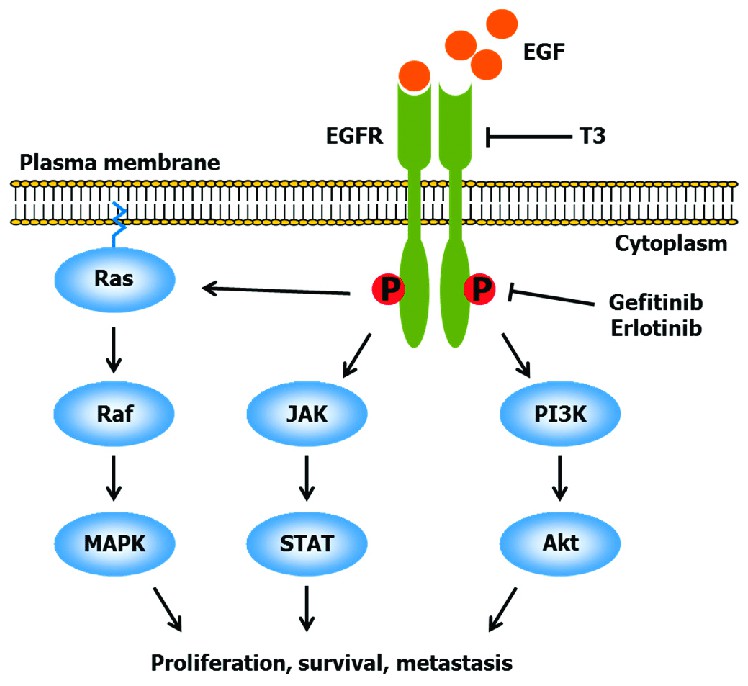What is EGF Protein
Epidermal Growth Factor (EGF) is a potent protein that has been under scientific scrutiny since it was first discovered around six decades ago. EGF is a high-affinity receptor-binding growth factor and Forbes has highlighted that prior to its discovery, the process of cell division was poorly understood. The investigation of this miraculous molecule has opened a treasure chest of knowledge regarding tissue growth and development.
EGF's discovery was through a series of serendipitous events that started in the mid-1950s. Dr. Stanley Cohen, a trained biochemist, embarked on what he termed "curiosity-driven research" and discovered EGF. This landmark discovery earned him the Nobel Prize in Physiology or Medicine in 1986 and it unveiled the secrets of cellular growth and development, thus revolutionizing biological research.
The EGF gene, situated on chromosome 4, locus q25, consists of 23 exons among which, exons 20–23 encode the EGF domain. The protein generated from this gene has a structural complexity that underlies its diverse functions. It is initially synthesized as a glycosylated 1207-amino acid transmembrane precursor, which is processed by appropriate proteases to generate the mature and functional 53-amino acid protein. The protein structure of EGF is characterized by three disulfide bonds, which results in a compact, globular form.
Function of EGF protein
Upon touching upon the purpose of EGF, it plays a crucial role in numerous biological functions, including cell proliferation, differentiation, and survival. EGF is a potent mitogenic factor that has the ability to stimulate the growth of a variety of epidermal and epithelial cells. For example, in the skin, EGF promotes the migration and proliferation of fibroblasts and keratinocytes, expediting wound healing. It is also involved in various processes such as organogenesis, body growth, and tissue regeneration in physiological and pathological conditions.
EGF protein related signal pathway
The incredible biological effects of EGF are made possible through a sophisticated signal transduction pathway known as the EGF receptor (EGFR) pathway. EGFR is a transmembrane glycoprotein with an extracellular ligand-binding domain and an intracellular domain with tyrosine kinase activity. Upon EGF binding, EGFR undergoes dimerization, either as a homodimer or a heterodimer with other members of the ErbB family, leading to the autophosphorylation of tyrosine residues within the cytoplasmic domain. This is followed by several downstream signalling events involving various pathways such as the PI3K/AKT, Ras/Raf/MAPK, and JAK/STAT pathways which eventually lead to gene expression, cell growth, and proliferation.

Fig1. EGF Signaling (Eitsuka, et al. 2016)
EGF protein related diseases
Despite its essential roles, dysregulation of the EGF protein has been linked to numerous disease states. Particularly, overexpression and mutations of the EGFR gene have been associated with various types of cancers, including breast, lung, colorectal, and head and neck cancers. In fact, the development and progression of many tumors have been attributed to the constitutive activation of the EGF/EGFR pathway. Moreover, EGF has also been implicated in congenital conditions such as hypomagnesemia, a condition characterized by chronically low levels of magnesium in the blood.
EGF protein's applications in biomedical
As a result of the association of EGF with disease pathways, this protein has become a prime target for biomedical therapeutic applications. For instance, monoclonal antibodies and tyrosine kinase inhibitors targeting the EGF/EGFR pathway have been developed to treat cancers characterized by aberrant EGFR activation. Rationales for targeting EGFR include the inhibition of cell proliferation, induction of apoptosis, and reduction of metastatic potential, angiogenesis, and tumor-induced immunosuppression.
Furthermore, the application of EGF in regenerative medicine is a burgeoning field. Since EGF aids tissue regeneration and wound healing, it has potential applications in treating conditions such as chronic ulcers and burns. Recombinant EGF has been used successfully in several clinical trials for wound healing, tissue repair, and prevention of necrosis.
In conclusion, EGF represents a protein of extraordinary importance, defining a vital gateway to the comprehension of fundamental phenomenon of tissue growth and regeneration. The multidimensional importance of this protein in health and disease is a testament to its potential as a therapeutic molecule, thereby underlining the importance of further research in EGF.
Our Featured Products
| Cat.No. | Product Name | Species | Source (Host) | Tag |
|---|---|---|---|---|
| EGF-232H | Recombinant Human EGF, Fc-tagged | Human | CHO | Fc |
| EGF-12320H | Recombinant Human EGF, GST-tagged | Human | E.coli | GST |
| EGF-1379H | Recombinant Human EGF Protein, MYC/DDK-tagged | Human | HEK293 | Myc/DDK |
| EGF-138H | Active Recombinant Human EGF Protein | Human | E.coli | |
| EGF-2837H | Recombinant Human EGF Protein, His (Fc)-Avi-tagged | Human | HEK293 | His (Fc)-Avi |
| Egf-01M | Active GMP Recombinant Mouse Egf Protein, His-Tagged | Mouse | E.coli | His |
| EGF-4366C | Recombinant Canine EGF Protein | Canine | Yeast | N/A |
| EGF-4411F | Recombinant Feline EGF Protein | Feline | Yeast | N/A |
| EGF-4362S | Recombinant Swine EGF Protein | Swine | Yeast | N/A |
| EGF-4412C | Recombinant Chicken EGF Protein | Chicken | Yeast | N/A |
Reference
- Eitsuka, Takahiro & Tatewaki, Naoto & Nishida, Hiroshi & Nakagawa, Kiyotaka & Miyazawa, Teruo. (2016). Synergistic Anticancer Effect of Tocotrienol Combined with Chemotherapeutic Agents or Dietary Components: A Review. International Journal of Molecular Sciences. 17. 1605. 10.3390/ijms17101605.

